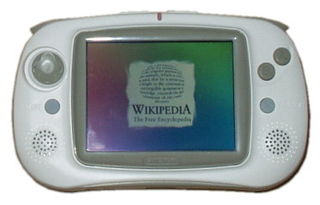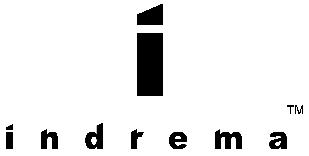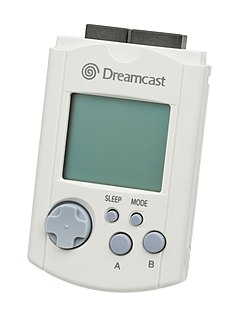 W
WThe Sega Pico, also known as Kids Computer Pico, is an educational video game console by Sega Toys. Marketed as "edutainment", the main focus of the Pico was educational video games for children between 3 and 7 years old. The Pico was released in June 1993 in Japan and November 1994 in North America and Europe, later reaching China. It was succeeded by the Advanced Pico Beena, which was released in Japan in 2005. Though the Pico was sold continuously in Japan through the release of the Beena, in North America and Europe the Pico was less successful and was discontinued in early 1998, later being re-released by Majesco Entertainment. Releases for the Pico were focused on education for children and included titles supported by licensed franchised animated characters, including Sega's own Sonic the Hedgehog series. Overall, Sega claims sales of 3.4 million Pico consoles and 11.2 million game cartridges, and over 350,000 Beena consoles and 800,000 cartridges.
 W
WThe Cybiko is a Russian handheld computer introduced in the U.S. by David Yang's company Cybiko Inc. as a retail test market in New York on April 2000, and rolled out nationwide in May 2000. It is designed for teens, featuring its own two-way radio text messaging system. It had over 430 "official" freeware games and applications. Because of the text messaging system, it features a rubber QWERTY keyboard. An MP3 player add-on with a SmartMedia card slot was made for the unit as well. The company stopped manufacturing the units after two product versions and only a few years on the market. Cybikos can communicate with each other up to a maximum range of 100 metres. Several Cybikos can chat with each other in a wireless chatroom. By the end of 2000, the Cybiko Classic sold over 500,000 units.
 W
WThe Dreamcast is a home video game console released by Sega on November 27, 1998 in Japan, September 9, 1999 in North America, and October 14, 1999 in Europe. It was the first in the sixth generation of video game consoles, preceding Sony's PlayStation 2, Nintendo's GameCube, and Microsoft's Xbox. The Dreamcast was Sega's final home console, marking the end of the company's eighteen years in the console market.
 W
WThe Game Boy Advance (GBA) is a 32-bit handheld game console developed, manufactured and marketed by Nintendo as the successor to the Game Boy Color. It was released in Japan on March 21, 2001, in North America on June 11, 2001, in the PAL region on June 22, 2001, and in mainland China as iQue Game Boy Advance on June 8, 2004. The GBA is part of the sixth generation of video game consoles. The original model does not have an illuminated screen; Nintendo addressed that with the release of a redesigned model with a frontlit screen, the Game Boy Advance SP, in 2003. A newer revision of the redesign was released in 2005, with a backlit screen. Around the same time, the final redesign, the Game Boy Micro, was released in September 2005.
 W
WThe Game Boy Advance SP, released in Japan on February 14, 2003, is a sixth-generation handheld game console developed, released, and marketed by Nintendo that served as an upgraded version of the original Game Boy Advance. The "SP" in the name stands for "Special". It is the penultimate console in the Game Boy Advance family before the Game Boy Micro, released in September 2005. The Game Boy Advance line was followed by the Nintendo DS family, starting with the release of the original Nintendo DS in November 2004.
 W
WThe Game Boy Micro is a handheld game console developed and manufactured by Nintendo. It was first released in Japan on September 13, 2005 as a smaller, lighter redesign of the Game Boy Advance. The system is the last console in the Game Boy line, alongside the AGS-101 model of the Game Boy Advance SP. Unlike its predecessors, the Game Boy Micro lacks backward compatibility for original Game Boy and Game Boy Color games.
 W
WGameKing is a brand of handheld game consoles, designed and developed by Timetop in 2003, for the Hong Kong consumer market. The brand has three consoles, the GameKing I, the GameKing II and the GameKing III. A fourth console, the Handy Game, was produced by Timetop and shares some branding, but otherwise has little to do with the GameKing franchise.
 W
WThe GP32 is a handheld game console developed by the South Korean company Game Park. It was released on November 23, 2001, in South Korea and distributed in some parts of Europe.
 W
WIndrema Entertainment Systems was a consumer electronics company famous for the Indrema L600 Entertainment System, a game console intended for independent game developers.
 W
WThe Leapster Learning Game System is an educational handheld game console aimed at 5 to 10-11 year olds, made by LeapFrog Enterprises. Its games teach the alphabet, phonics, basic math, and art and animal facts to players. Along with a directional pad, the system features a touchscreen with a stylus pen that enables young users to interact directly with the screen. On February 5, 2008, LeapFrog announced the Leapster2 handheld device as a successor to the Leapster. The Leapster2 is essentially the previous system with an added USB port and SD card slot. These additions give the ability to play a downloaded full game or short game including the ability to log data on gameplay, such as what has been learned by the user or art created by the user. Downloadable games are not for sale.
 W
WThe N-Gage is a smartphone combining features of a mobile phone and a handheld game system developed by Nokia, announced on 4 November 2002 and released on 7 October 2003. It runs the original Series 60 platform on Symbian OS v6.1.
 W
WThe N-Gage QD is a handheld game console and smartphone by Nokia, and a redesign of the N-Gage. It was unveiled on April 14, 2004, and was released on May 26, 2004, running the same Symbian OS v6.1 with Series 60 1st Edition FP1.
 W
WThe Neo Geo Pocket Color is a 16-bit color handheld video game console manufactured by SNK. It is a successor to SNK's monochrome Neo Geo Pocket handheld which debuted in 1998 in Japan, with the Color being fully backward compatible. The Neo Geo Pocket Color was released on March 16, 1999 in Japan, August 6, 1999 in North America, and on October 1, 1999 in Europe, entering markets all dominated by Nintendo, competing with Nintendo's Game Boy Color.
 W
WThe Nintendo GameCube is a home video game console released by Nintendo in Japan on September 14, 2001, in North America on November 18, 2001, and in PAL territories in 2002. The GameCube was Nintendo's entry in the sixth generation of video game consoles and is the successor to the Nintendo 64. The GameCube competed with Sony's PlayStation 2 and Microsoft's original Xbox.
 W
WNuon is a technology developed by VM Labs that adds features to a DVD player. In addition to viewing DVDs, one can play 3D video games and use enhanced DVD navigational tools such as zoom and smooth scanning of DVD playback. One could also play CDs while the Nuon graphics processor generates synchronized graphics on the screen. There were plans to provide Internet access capability in the next generation of Nuon-equipped DVD players.
 W
WThe PlayStation 2 (PS2) is a home video game console developed and marketed by Sony Computer Entertainment. It was first released in Japan on March 4, 2000, in North America on October 26, 2000, in Europe on November 24, 2000, and in Australia on November 30, 2000. It is the successor to the original PlayStation, as well as the second installment in the PlayStation console line-up. A sixth-generation console, it competed with Sega's Dreamcast, Nintendo's GameCube, and Microsoft's original Xbox.
 W
WThe Pokémon Mini is a handheld game console that was designed and manufactured by Nintendo and themed around the Pokémon media franchise. It is the smallest game system with interchangeable cartridges ever produced by Nintendo, weighing just under two and a half ounces. It was first released in North America on November 16, 2001, then in Japan on December 14, 2001, and in Europe on March 15, 2002. The systems were released in three colors: Wooper Blue, Chikorita Green, and Smoochum Purple.
 W
WThe PSX is a Sony digital video recorder with a fully integrated PlayStation 2 home video game console. It was released in Japan on December 13, 2003. Since it was designed to be a general-purpose consumer video device, it was marketed by the main Sony Corporation instead of Sony Computer Entertainment and does not carry the usual PlayStation branding. Its high cost resulted in poor sales, prompting Sony to cancel plans to release the PSX outside Japan, making it a commercial failure.
 W
WThe Tapwave Zodiac is a mobile entertainment console. Tapwave announced the system in May 2003 and began shipping in October of that same year. The Zodiac was designed to be a high-performance mobile entertainment system centered on video games, music, photos, and video for 18- to 34-year-old gamers and technology enthusiasts. By running an enhanced version of the Palm Operating System (5.2T), Zodiac also provided access to Palm's personal information management software and many other applications from the Palm developer community. The company was based in Mountain View, California.
 W
WThe V.Smile is a sixth-generation educational home video game console manufactured and released by VTech. Titles are available on ROM cartridges called "Smartridges", to play off the system's educational nature. The graphics are primarily sprite-based. The console is often sold bundled with a particular game, with most of them having a game called Alphabet Park Adventure. Several variants of the V.Smile console are sold including handheld versions, or models with added functionality such as touch tablet integrated controllers or microphones. The V-Motion is a major variant with its own software lineup that includes motion sensitive controllers and has Smartriges designed to take advantage of motion-related "active learning". The V-Motion and Smartridges however are fully backwards compatible with other V.Smile variants and V.Smile Smartridges, and a V-Motion Smartridge can also be played on V.Smile console or handheld, albeit with limited functionality. However, in 2010, the new and old models of the V.Smile were discontinued. VTech still made games for the V.Smile until at least 2012.
 W
WThe Visteon Dockable Entertainment System is a portable DVD player created by Visteon in 2006 for the US market at an MSRP of $1299 USD. The player is notable for containing officially licensed Game Boy Advance hardware, as Visteon partnered with Nintendo to announce the product at CES 2006. Initially due out in April, the product was then delayed to May before finally launching in July of that year. To celebrate the product's launch Visteon held a photography and writing contest.
 W
WThe Visual Memory Unit (VMU), also referred to as the Visual Memory System (VMS) in Japan and Europe, is the primary memory card produced by Sega for the Dreamcast home video game console. The device features a monochrome liquid crystal display (LCD), multiplayer gaming capability, second screen functionality, a real-time clock, file manager, built-in flash memory, and sound capability. Prior to the launch of the Dreamcast, a special Godzilla edition VMU, preloaded with a virtual pet game, was released on July 30, 1998 in Japan.
 W
WThe XaviXPORT, sold as the Domyos Interactive System in Europe in Decathlon stores, is a fitness-based home video game console developed by Japanese company SSD COMPANY LIMITED and released in the United States in 2004 during the sixth generation of video game consoles. The console uses cartridges and wireless controllers. The controllers are shaped like sports equipment, with users actions represented on the television screen through the use of sensors in the controllers. The MSRP for the XaviXPORT was USD $79.99 at launch. However, the system has been officially sold as low as $19.99 bundled with tennis or bowling in their 2013 Spring Cleaning sale. In 2013, Xavix's social media sites went silent, but the ecommerce site remained up until 2017 when the official domain expired.
 W
WXbox is a video gaming brand created and owned by Microsoft. The brand consists of five video game consoles, as well as applications (games), streaming services, an online service by the name of Xbox network, and the development arm by the name of Xbox Game Studios. The brand was first introduced in the United States in November 2001, with the launch of the original Xbox console.
 W
WThe Xbox is a home video game console and the first installment in the Xbox series of video game consoles manufactured by Microsoft. It was released as Microsoft's first foray into the gaming console market on November 15, 2001, in North America, followed by Australia, Europe and Japan in 2002. It is classified as a sixth-generation console, competing with Sony's PlayStation 2 and Nintendo's GameCube. It was also the first major console produced by an American company since the release of the Atari Jaguar in 1993.